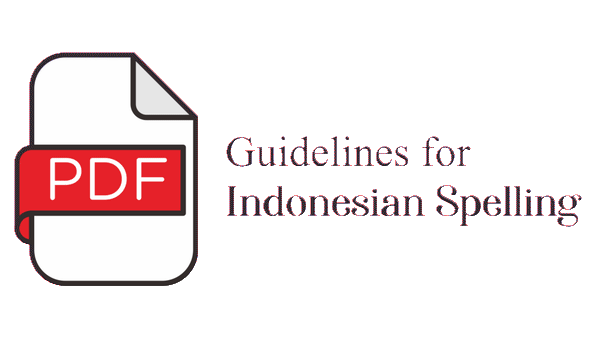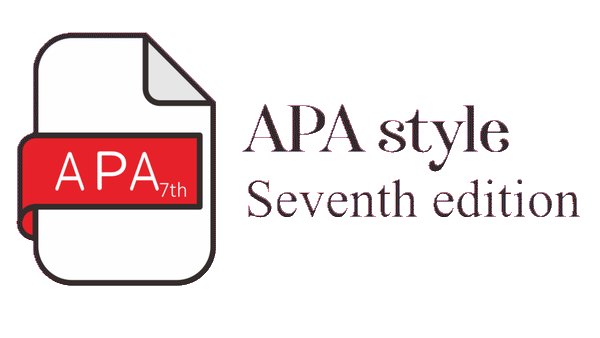Kerugian Ekonomi Ghost Gear Perikanan Kecil Di Laut Jawa (Studi Kasus: Tegal, Jawa Tengah)
Abstract
Setiap tahun, diperkirakan 640.000 kg jaring bekas masuk ke laut, hal ini dikarenakan beberapa alasan seperti alat tangkap yang ditinggalkan, alat tangkap hilang, dan alat tangkap yang dibuang (abandon, lost, discarded atau ALDFG) dan lebih dikenal sebagai ghost gear. Nelayan skala kecil berpotensi menjadi pelaku sekaligus korban ghost gear tanpa disadari. Penelitian ini bertujuan untuk mengestimasi potensi kerugian ekonomi yang ditimbulkan oleh ghost gear. Metode pengambilan sampel dilakukan dengan Purposive sampling. Berdasarkan hasil analisis kerugian langsung yang dialami nelayan sebagian besar disebabkan oleh tersangkutnya baling-baling oleh ghost gear dan tersangkutnya alat tangkap dengan ghost gear. Sedangkan untuk kerugian tidak langsung, nelayan menghabiskan waktu tambahan rata-rata 30 sampai 60 menit untuk membersihkan dan memperbaiki alat tangkap ataupun baling-baling yang terbelit ghost gear. Menurut hasil perhitungan, kerugian ekonomi tahunan untuk nelayan harian adalah Rp. 280.433.674,03 dan untuk nelayan mingguan Rp141.883.740.963,19. Hal ini menunjukkan penurunan pendapatan tahunan sebesar 11% untuk nelayan harian dan 1% untuk nelayan mingguan. Menurunnya pendapatan juga akan merugikan cara hidup nelayan, khususnya pengeluaran rumah tangganya. Perubahan pengeluaran rumah tangga sebesar 50% untuk kebutuhan sehari-hari, 30% untuk pendidikan, dan 20% untuk biaya listrik bulanan. Untuk mengurangi dampak ghost gear ini diperlukan pengelolaan limbah jaring bekas, oleh karena itu diharapkan pemerintah mendukung pelabuhan-pelabuhan perikanan di Tegal dengan menyediakan fasilitas pembuangan, skema pembelian kembali atau inisiatif penggunaan kembali atau daur ulang melalui rantai pasokan pengumpul jaring bekas.
Title: Economic Impact of Ghost Gear on Small-Scale Fisheries in Java Sea (Case Study: Tegal, Central Java)
Every year, an estimated 640,000 kg of used nets enter the sea for several reasons: lost fishing gear, discarded fishing gear (abandoned, lost, discarded), and ghost gear. Small-scale fishermen have the potential to become perpetrators as well as victims of ghost gear without realizing it. This study aims to estimate the potential economic losses caused by ghost gear. The sampling method was carried out by purposive sampling. Based on the analysis results, the direct losses experienced by fishermen were mostly caused by the ghost gear propellers’ snagging and the fishing gear with the ghost gears. As for indirect losses, fishermen spend an average of 30 to 60 minutes extra time cleaning and repairing fishing gear or propellers entangled in ghost gear. According to the calculation results, the annual economic loss for daily fishermen is IDR 208,350,481.60, and for weekly fishermen, IDR 141,883,740,963.19. This represents a decrease in annual income of 11% for daily fishers and 1% for weekly fishermen. The decline in income will also harm fishermen’s way of life, especially their household expenses. Changes in household expenditure by 50% for daily needs, 30% for education, and 20% for monthly electricity costs. To reduce the impact of this ghost gear, it is necessary to manage used net waste. Therefore, it is hoped that the government will support fishing ports by providing disposal facilities, buyback schemes, or Reuse or recycling initiatives through the used net collector supply chain.
Keywords
Full Text:
PDFReferences
Abalansa, S., El Mahrad, B., Vondolia, G. K., Icely, J. & Newton, A. 2020. The Marine Plastic Litter Issue: A Social-Economic Analysis. Sustainability, 12, 8677.
Al-Masroori H. Al-OufiaJ. L.McIlwainaE. McLean 2004. Catches of lost fish traps (ghost fishing) from fishing grounds near Muscat, Sultanate of Oman. University, Sultanae of Oman.
Antonelis G.A, Baker.J.D Jeffrey J. Polovina. 2011. Improved Body Condition of Weaned Hawaiian Monk Seal Pups Associated With El Niño Events: Potential Benefits To An Endangered Species. Marine Mammal Science.
Antonia Unger, N. H. 2016. Fisheries As A Source of Marine Debris on Beaches In The United Kingdom. Marine Pollution Bulletin, 107, 52-58.
Bessa, F., Barria, P., Neto, J. M., Frias, J. P. G. L., Otero, V., Sobral, P. & Marques, J. C. 2018. Occurence Of Microplastics in Commercial Fish From A Natural Estuarine Environment.
Brown C, Jones FC, Braithwaite VA. 2005. Environmental influences on boldness-shyness traits in the tropical poeciliid, Brachyraphis episcopi. Anim Behav (in press).
Gilman, E. 2015. Status Of International Monitoring and Management of Abandoned Lost and Discarded Fishing Gear and Ghost Fishing. Marine Policy, 60, 225-239.
Jambeck, J. R., Geyer, R., Wilcox, C., Siegler R, T., Perryman, M., Andrady, A., Narayan, R. & Law, K. L. 2015. Plastic Waste Inputs from Land into The Ocean. Science, 347.
Kemenko Marves. (2020, Mei 27). Penanganan Sampah Laut Masih Terus Berlanjut. Kementerian Koordinator Bidang Kemaritiman dan Investasi. Diambil dari https://maritim.go.id/penanganan-sampah-laut-masih-terus-berlanjut/.
Kiessling, W. 2002. “Secular Variations in the Phanerozoic Reef Ecosystem”, Phanerozoic Reef Patterns, GeoScienceWorld.
King P. 2018. Fishing for litter: A cost-benefit analysis of how to abate ocean pollution. University of Bath.
Koslow J.A, G. W. Boehlert, J. D. M. Gordon, R. L. Haedrich, P. Lorance, N. Parin, Continental slope and deep-sea fisheries: implications for a fragile ecosystem, ICES Journal of Marine Science, Volume 57, Issue 3, June 2000, Pages 548–557, https://doi.org/10.1006/jmsc.2000.0722.
Macfadyen G., Huntington T., & Cappell R. 2009. Abandoned, Lost or Otherwise Discarded Fishing Gear, Rome, Unep.
Mrosovsky N., Ryan G. D. And James M. C. (2009) Leatherback Turtles: The Menace of Plastic. Marine Pollution Bulletin 59, 287–289.
Ofiara D,D, Seneca J. 2001. Economic Losses from Marine Pollution: A Handbook for Assesment. US. Island Press.
Omer, A. M. Energy, environment and sustainable development, Renewable and Sustainable Energy Reviews, Volume 12, Issue 9.
Purba, N. P., Handyman, D. I. W., Pribadi, T. D., Syakti, A. D., Pranowo, W. S., Harvey, A. & Ihsan N, Y. 2019. Marine Debris In Indonesia : A Review Of Research And Status. Marine Pollution Bulletin, 134-144.
Rochman, C. M., Tahir, A., Williams, S. L., Baxa, D. V., Lam, R., Miller, J. T., Teh, F.-C., Werorilangi, S. & Teh, S. J. 2015. Anthropogenic Debris in Seafood: Plastic Debris and Fibers from Textiles in Fish and Bivalves Sold for Human Consumption. Scientific Reports, 5 (1).
Sancho G, Puente. E, Bilbao. A, Gomez. E, Arregi. E. 2003. Catch rates of monkfish (Lophius spp.) by lost tangle nets in the Cantabrian Sea (northern Spain), Fisheries Research, Volume 64, Issues 2–3, Pages 129-139,
Sarasita, D., Yunanto, A. & Yona, D. 2019. Kandung Mikroplastik Pada Empat Jenis Ikan Ekonomis Penting Di Perairan Selat Bali. Jurnal Ikhtiologi Indonesia, 20 (1), 1-12.
Sarkis J, Meade L, Talluri S. 2002. E-Logistics and the Natural Environment in The Ecology of the New Economy. London: Taylor & Francis Group.
World Bank. 2010. Economic Valuation of Subsistence Fisheries. Jakarta: World Bank
World Bank. 2013. Marshall Islands at A Glance. Jakarta: World Bank
World Bank. 2018. The Indonesia Marine Debris Hotspots Rapid Assessment. Jakarta: World Bank
DOI: http://dx.doi.org/10.15578/jsekp.v18i2.12863
Indexed by:
-------------------------------------------------------------------------------------
Published by
Research Center for Marine and Fisheries Socio-Economic
in collaboration with
Indonesian Marine and Fisheries Socio-Economics Research Network

This work is licensed under a Creative Commons Attribution-NonCommercial-ShareAlike 4.0 International License.


















